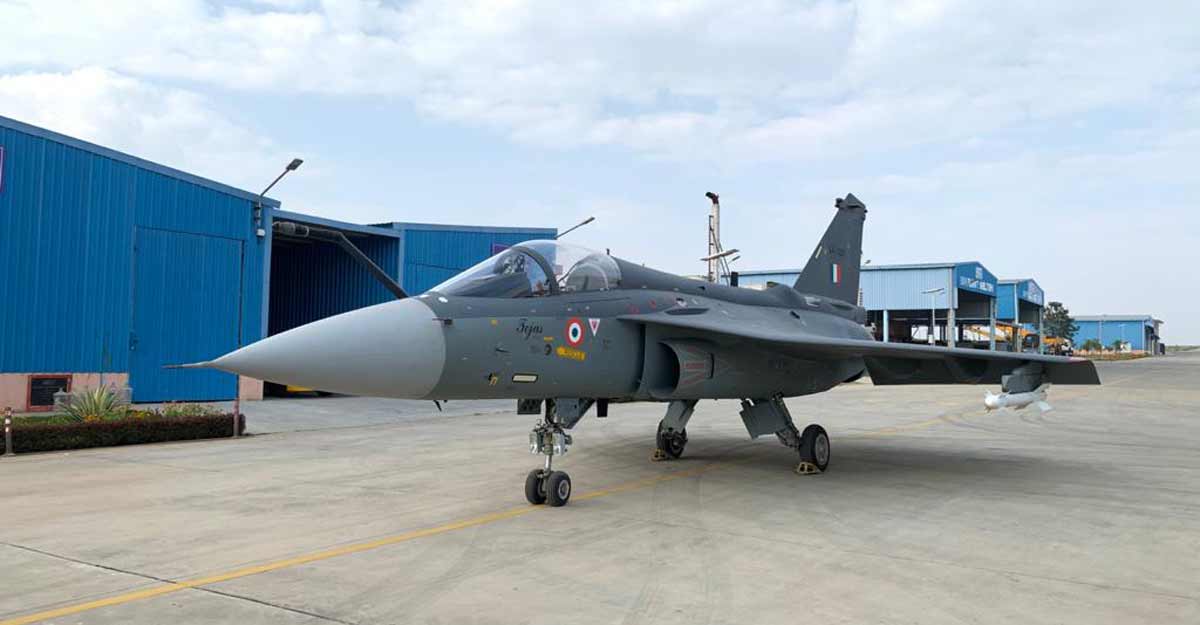On the march for 'Atma nirbharta'
Divyam Sharma
On August 9, Defence Minister Rajnath Singh announced an embargo on 101 items that the Defence Ministry will stop importing. These include simple and some highly complex technologies like bulletproof vests, ballistic helmets, towed artillery guns, GSAT 6-Terminal, radars, 123 LCA MK1-A advanced indigenized content though some of its technology has foreign components not available in India.
The move is intended to bring the ‘Atma Nirbharbharta’ or Self-reliance in the defence sector. India is the 2nd largest arms importer in the world and the defence industrial complex is still lagging in terms of procurement of latest technologies and strong competition from foreign bidders. Rajnath Singh said that from April 2015-August 2020, almost 260 schemes of items were contracted by the Armed forces at an approximate cost 3.5 lakh crores.
With this move, contracts worth 4 lakh crores will be placed with the domestic industry in 6-7 years to allow Private entities, Defense PSUs and OFB to manufacture items that were earlier imported. According to the government, the embargo has been planned progressively between 2020-2024 and therefore it is not an instant ban.
PM Modi launched the Atma Nirbhar Bharat scheme to promote indigenisation, create an atmosphere for domestic manufacturing, this was carried forward with an economic package worth 20 lakh crore and several economic measures for a systematic overhaul. The FM Nirmala Sitharaman in May announced that the government will increase FDI in the defence sector from 49% to 74% through the automatic route, though she also stated that “import of some weapons and platforms will not be allowed, every year this list will be increased as we build capacities.”
With the changing nature of warfare, the needs of the armed forces have also changed and manpower is not the only dominant factor in case of a conflict. Best equipment, advanced technology is required to avert any threat.
In the ‘Art of War,’ Sun Tzu says “He who occupies the battlefield first and awaits his enemy is at ease, and he who come later to the scene and rushes into the fight is weary.” Staying one step ahead of the enemy is the ‘Art of War’ like Shekhar Gupta in his recent episode on Cut the Clutter said, no country will give you their cutting edge defence technology because nations want to stay one step ahead of other nations.
It’s important to see this through a chain of events that are directed towards creating a strong domestic defence infrastructure starting from the launch of Atma Nirbhar Bharat scheme to this embargo on 101 items.
The Ministry of Defence on July 27th released the draft DPP( Defence Procurement Procedure) 2020 which was later amended and also renamed to DAP(Defence Acquisition Procedure) 2020, it was driven by the defence reforms under the ‘Self-reliance’ scheme.
 |
| LCA MK1A (HAL Tejas) |
DPP and DPM(Defence Procurement Manual) are the principal regulations for defence procurement undertaken by MoD (Ministry of Defence). DPP governs the procurement of long term strategic assets also known as ‘Capital Procurements’ it’s a tool or a framework that is used to understand how the procurement will take place in case of any ambiguity. While DPM deals with providing a framework for procuring non-strategic & bulk purchases in the armed forces like uniforms, vests and other equipments required in bulk.
The procurement procedure is based on the need of the Army, Navy and The Air Force which is placed through a detailed report submitted by the respective forces to justify the procurement.
In the current context, DAP 2020 aims to create a level playing field for domestic players, though the embargo will bar foreign bidders in the process to manufacture these 101 items. Chapter III of DAP 2020 deals with ‘Make’ and ‘Innovation’ it attempts to further build the ‘Make in India’ and ‘Start up India’ campaign.
The ‘Make’ category aims to achieve self-reliance through the participation of Indian industries and allowing only Indian entity, OFB and DPSUs. Though the government has still allowed Indian public and private companies to tie up with foreign companies OEM( Original equipment manufacturers) to produce equipments in India. This is as per the FDI reforms initiated in May and with DAP 2020 where Make III category allows Indian entities to enter into a Joint Venture (JV) with OEM and the purchase of products will take place under ‘Buy Indian’ category with minimum 60% indigenous content.
Indian Armed forces have seen and are still seeing conflicts and the country is surrounded by internal and external threats. Being a promising defence market and 2nd largest arms importer in the world, the Indian defence sector is not in its nascent stage and has strong potential to become a global supplier of arms. The existing situation involves tough competition for private players by DPSUs.
The Indian Army is set to replace the INSAS rifle by AK-203 which it will produce in a joint venture with Russia, the manufacturing will take place in Amethi. MoD has approved proposals for speedy procurement of AK-203 by considering the ongoing Indo-China border conflict. The Indian Army is looking to procure armoured fighting vehicles from 3 different companies namely TATA wheeled armoured protection, American Stryker Infantry combat vehicle and Humvee. With the item being on the 'negative' list, it comes as an opportunity for TATA to manufacture these armoured vehicles, but there are certain items which have an Indian replacement.
It will be a great opportunity and a challenge for the Indian defence industry which has the potential to become a global arms manufacturer, though operational requirements will have priority over the negative list in the present context.
Source:
https://www.lexology.com/library/detail.aspx?g=a69dbc9b-8748-496a-8d73-f06139b74ce5
https://idsa.in/idsacomments/atma-nirbhar-in-defence-technology-lkbehera-100820
https://mod.gov.in/sites/default/files/Amend270720.pdf (Draft DAP 2020)


.jpg)
Amazing stuff. Way to go Divyam!!! Looking forward to more of this<3
ReplyDelete